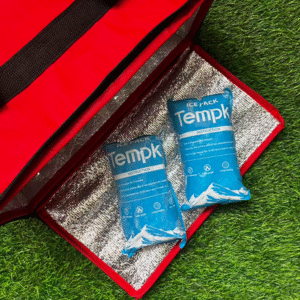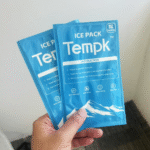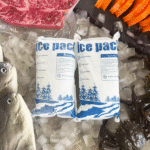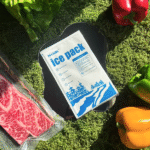How Do Dry Ice Bags & Os pacotes revolucionam o transporte da cadeia de frio em 2025?
Em 2025, temperature-sensitive goods face increasingly complex transportation challenges. To ensure that perishable items like pharmaceuticals, comida, and biological samples reach their destination safely and without compromise, dry ice bags and dry ice packs are pivotal. These cold chain solutions provide a reliable, econômico, and environmentally-friendly method for maintaining ultra-low temperatures. This article explains the working principles of dry ice bags, their advantages over traditional cooling methods, and how businesses can maximize savings and operational efficiency.
-
Como dry ice bags and packs function in cold chain logistics?
-
What benefits do dry ice packs offer over traditional ice and gel solutions?
-
How can businesses optimize their shipping costs using dry ice technology?
-
What are the emerging trends and innovations in dry ice technology for cold chain logistics?
How Do Dry Ice Bags and Packs Function in Cold Chain Logistics?
Dry ice bags and packs play a crucial role in maintaining the integrity of temperature-sensitive products during transit. Filled with solid carbon dioxide, dry ice sublimates at -78.5°C (-109.3°F) para manter temperaturas ultrabaixas. Unlike water-based coolants, gelo seco sublima em gás, não deixando resíduos líquidos. This unique property helps avoid issues like water damage to products, making it an ideal solution for industries that require precise and clean temperature control, such as pharmaceuticals and biotechnology.
Key Characteristics of Dry Ice Bags and Packs:
-
Sub-zero cooling: O gelo seco mantém uma temperatura extremamente baixa, ideal for frozen food, produtos farmacêuticos, e materiais de pesquisa.
-
Duradouro: Dry ice packs stay cold for extended periods, even during long-distance shipments.
-
Sem água derretida: The sublimation of dry ice into CO₂ gas avoids water damage, which can be a problem with traditional ice and gel packs.
| Beneficiar | Gelo tradicional | Sacos de gelo seco & Pacotes | Your Impact |
|---|---|---|---|
| Duração do resfriamento | Short-lived | Duradouro | Vida útil prolongada do produto |
| Risco de danos causados pela água | Alto | Nenhum | Deterioração reduzida |
| Storage Efficiency | Volumoso, mais pesado | Compactar, isqueiro | More cost-efficient shipping |
Why Should Businesses Choose Dry Ice Packs Over Traditional Methods?
Dry ice offers several advantages over traditional cooling methods such as gel packs and regular ice. Here’s a breakdown of how dry ice packs outperform conventional ice:
-
Duração de resfriamento mais longa: Manchas de gelo seco podem manter temperaturas frias para até 48 horas, compared to regular ice that begins to melt within a few hours.
-
Space and Weight Efficiency: Since dry ice is denser than water, it occupies less space and reduces the overall weight of the shipment, which can lead to substantial cost savings in transport.
-
Ecologicamente correto: Gelo seco sublima em gás co₂, which does not contribute to water contamination or waste disposal issues, unlike gel or water-based packs.
Exemplo:
A pharmaceutical company that switched from traditional ice packs to dry ice reported a 30% reduction in spoilage rates, e a 15% savings in shipping costs due to reduced packaging volume and fewer restocks during transport.
How Can Businesses Save Money with Dry Ice Packs?
Switching to dry ice packs can lead to significant cost savings in various ways:
-
Longer Cooling Periods: Dry ice packs reduce the need for constant replenishing during transport, lowering the overall cost of cooling materials.
-
Smaller Packaging Size: Their compact design allows businesses to optimize storage and shipping containers, reducing space and weight, which translates into lower shipping expenses.
-
Potential for Reuse: Em alguns casos, dry ice bags can be reused, especially the outer packaging materials, helping reduce waste and save money on additional supplies.
Estudo de caso:
A global seafood distributor transitioned to dry ice for long-haul shipments, resultando em um 20% reduction in spoilage rates, improved product quality, and a decrease in transport-related costs by 18% in just one quarter.
What Are the Latest Innovations in Dry Ice Technology for Cold Chain Logistics?
As cold chain logistics continues to evolve, the demand for smarter, more efficient cooling solutions has increased. Em 2025, dry ice technology has incorporated several innovative features that improve performance and offer new opportunities for monitoring and compliance:
-
Sacos de gelo seco inteligentes: Equipped with temperature sensors, these bags communicate with tracking systems, offering real-time temperature monitoring for sensitive shipments.
-
Materiais de isolamento avançado: New materials have enhanced the ability of dry ice bags and packs to maintain low temperatures over extended periods.
-
Materiais de Embalagem Sustentáveis: There is a growing trend toward biodegradable dry ice packaging, helping companies meet environmental goals and reduce their carbon footprint.
Últimos desenvolvimentos de vista:
-
Integração de tecnologia inteligente: Real-time monitoring and tracking of temperature-sensitive shipments ensure quality and compliance.
-
Inovações ecológicas: The adoption of biodegradable and recyclable materials for packaging reduces the environmental impact.
-
Enhanced Cooling Materials: New insulation technologies extend the effective cooling period, Mesmo em condições desafiadoras.
Frequently Asked Questions About Dry Ice Bags and Packs
Q1: How long do dry ice bags last in transit?
Tipicamente, o gelo seco dura entre 12 para 48 horas, dependendo da quantidade utilizada e da qualidade do isolamento. Para remessas mais longas, gelo seco adicional pode ser necessário.
Q2: Sacos de gelo seco podem ser reutilizados?
Sim, the packaging material used for dry ice bags can often be reused, provided it remains intact and undamaged.
Best Practices for Using Dry Ice Bags and Packs
To maximize the effectiveness of dry ice bags and packs, Siga estas melhores práticas:
-
Correct Layering: Place the dry ice packs in the shipping container to ensure they are properly distributed between the products.
-
Ventilação: Always use a container with ventilation holes to allow CO₂ gas to escape, Prevenindo o acúmulo de pressão.
-
Monitoramento de temperatura: Use temperature loggers or IoT-enabled devices to track the temperature during transit and ensure your shipment stays within safe temperature ranges.
Dicas práticas:
-
Para remessas farmacêuticas, combine dry ice with phase-change materials (PCMs) for better temperature stability.
-
For food deliveries, ensure that dry ice is properly insulated and positioned to prevent direct contact with moisture-sensitive items.
Conclusão
Dry ice bags and dry ice packs continue to transform cold chain logistics, providing businesses with an efficient and sustainable solution for temperature-sensitive shipments. By understanding how to effectively use these innovative products, businesses can enhance their operations, reduzir custos, and improve product quality and customer satisfaction.
PRÓXIMOS PASSOS:
Consider transitioning to dry ice for your next shipment to enjoy longer-lasting cooling, better storage efficiency, and cost savings. Contact Tempk today for expert advice on optimizing your cold chain logistics with dry ice solutions.
Sobre Tempk
E tempk, somos especializados em soluções para cadeia de frio, offering a range of high-performance dry ice bags and packs designed to enhance the safety and efficiency of temperature-sensitive shipments. Our products meet the highest standards of performance and sustainability, ensuring that your products stay safe and fresh during transit.
Chamado à ação: Reach out to Tempk for a consultation on how our dry ice solutions can improve your cold chain logistics.
























